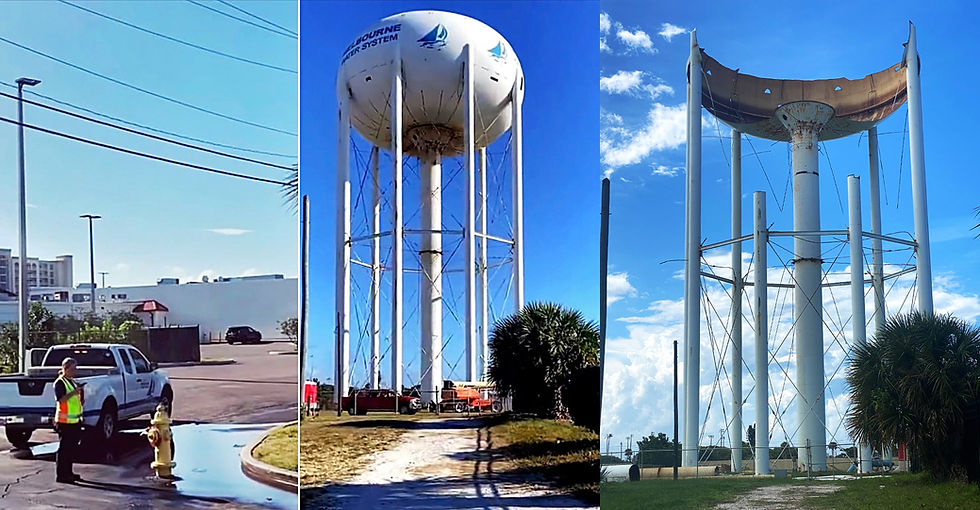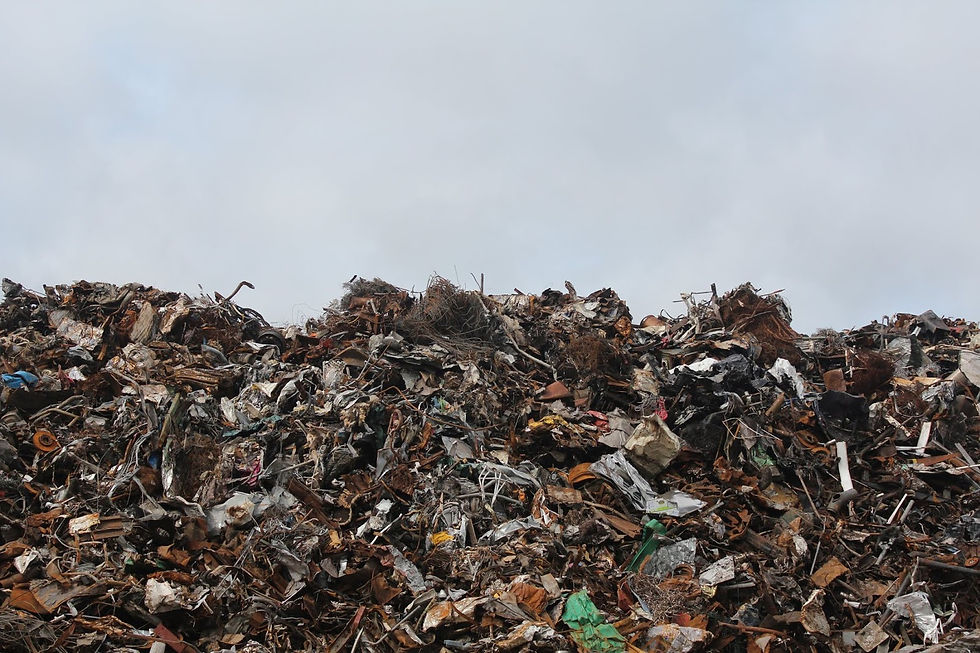What Really Happened to the Satellite Beach Water Tower? History, Cancer Concerns & Community Impact
- Fight For Zero
- Jun 13, 2021
- 3 min read

What Happened to the Satellite Beach Water Tower?
For decades, the Satellite Beach water tower stood tall across from Satellite High School, a familiar landmark that sparked both curiosity and controversy. But in June 2021, after years of disuse, the tower was finally dismantled, marking the end of an era for the beachside community.
While the tower itself was no longer serving a purpose, its story is deeply connected to local history, environmental health concerns, and even some common misconceptions about what water towers do in the first place.

Why Do We Have Water Towers Anyway?
At first glance, water towers might just look like giant tin cans on stilts, but they play a vital role in our everyday lives. Here’s the simple version:
Water towers store water high above the ground. The height creates pressure that pushes water into homes and businesses when you turn on the tap.
They act as backup systems. If power goes out, water towers keep water flowing because gravity doesn’t need electricity.
They help firefighters. Towers provide a reliable reserve of water in emergencies.
In short, water towers are like the community’s savings account for water, stored up high, always ready when needed.
Satellite Beach’s tower, however, hadn’t been in use for more than a decade. With modern pressurization systems, many cities no longer rely on towers, and that’s why this one was retired.

The Shadow of Cancer Concerns
The tower wasn’t just a backdrop for the community; it stood across from Satellite High School, which has long been associated with cancer cluster concerns.
In the 1990s, unusually high cases of rare cancers, particularly Hodgkin’s Lymphoma, were reported among students in the South Patrick Shores area.
In 2018, after years of pressure from residents and environmental advocates, Brevard County tested 13 beachside schools for harmful chemicals known as PFAS (per- and polyfluoroalkyl substances).
Satellite High School showed the highest levels of PFBA, one type of PFAS.
PFAS, sometimes called “forever chemicals,” are notorious for their persistence in the environment and links to cancer, thyroid problems, reproductive harm, and more. These chemicals have been widely used in firefighting foam, pesticides, and industrial products since the 1960s.
In March 2021, testing revealed PFAS levels beneath the water tower site at 406.4 ppt (parts per trillion), far above the EPA’s advisory limit of 70 ppt. Today, warning signs stand near the old housing area north of the tower, highlighting the lasting contamination.

Community Reaction to the Tower’s Removal
When the dismantling began on June 4, 2021, emotions ran high on social media:
“A true landmark,” wrote Kathy Ticker-Dadul.
“End of an era,” shared Marilyn Schmid.
“Good riddance!” said Bill Maier, pointing out that the tower confusingly read “Melbourne” even though it was in Satellite Beach.
Love it or hate it, the tower was a symbol that carried weight in more ways than one.
The story of the Satellite Beach water tower isn’t just about tearing down an old structure. It’s about how communities grow, how technology changes, and how environmental issues can shape public memory.
Water towers may be fading from the skyline, but they remain powerful symbols of resilience, history, and hometown pride. For Satellite Beach, this one will always be remembered, part landmark, part mystery, and part cautionary tale about the invisible things in our environment that affect us all.




Comments